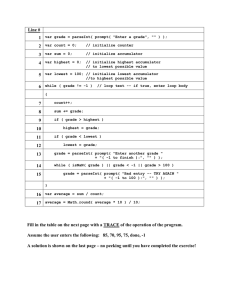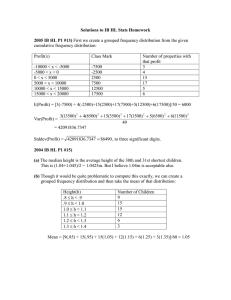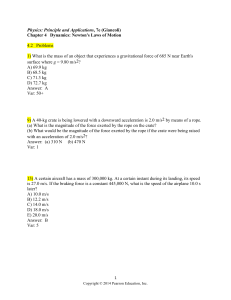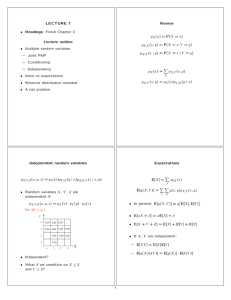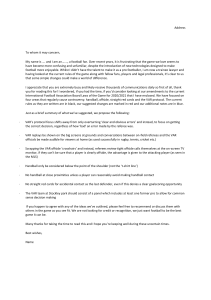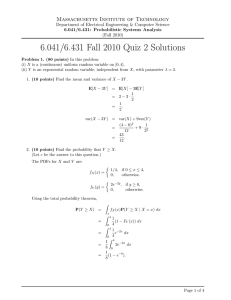Math 5080–1 Solutions to homework 1 May 22, 2012
advertisement
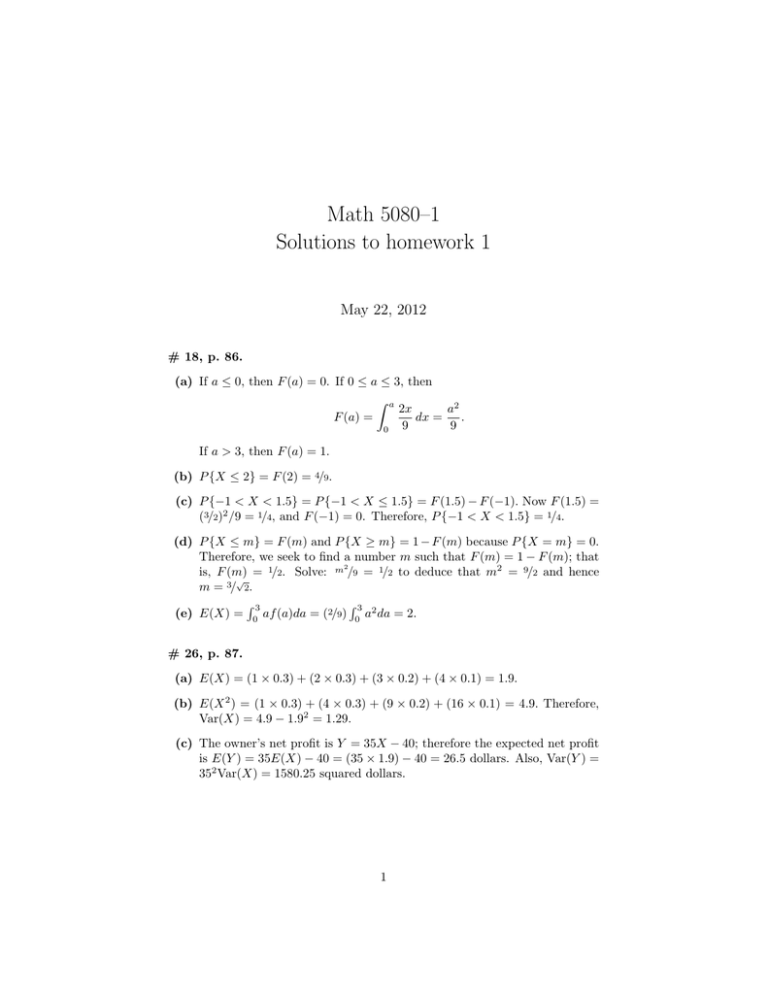
Math 5080–1
Solutions to homework 1
May 22, 2012
# 18, p. 86.
(a) If a ≤ 0, then F (a) = 0. If 0 ≤ a ≤ 3, then
Z a
a2
2x
dx = .
F (a) =
9
9
0
If a > 3, then F (a) = 1.
(b) P {X ≤ 2} = F (2) = 4/9.
(c) P {−1 < X < 1.5} = P {−1 < X ≤ 1.5} = F (1.5) − F (−1). Now F (1.5) =
(3/2)2 /9 = 1/4, and F (−1) = 0. Therefore, P {−1 < X < 1.5} = 1/4.
(d) P {X ≤ m} = F (m) and P {X ≥ m} = 1 − F (m) because P {X = m} = 0.
Therefore, we seek to find a number m such that F (m) = 1 − F (m); that
2
is, F (m) = 1/2. Solve: m /9 = 1/2 to deduce that m2 = 9/2 and hence
√
m = 3/ 2.
R3
R3
(e) E(X) = 0 af (a)da = (2/9) 0 a2 da = 2.
# 26, p. 87.
(a) E(X) = (1 × 0.3) + (2 × 0.3) + (3 × 0.2) + (4 × 0.1) = 1.9.
(b) E(X 2 ) = (1 × 0.3) + (4 × 0.3) + (9 × 0.2) + (16 × 0.1) = 4.9. Therefore,
Var(X) = 4.9 − 1.92 = 1.29.
(c) The owner’s net profit is Y = 35X − 40; therefore the expected net profit
is E(Y ) = 35E(X) − 40 = (35 × 1.9) − 40 = 26.5 dollars. Also, Var(Y ) =
352 Var(X) = 1580.25 squared dollars.
1
# 33, p. 88. We follow the discussion of pp. 77–78, and write H(x) := ex as
H(x) ' H(µ) + H 0 (µ)(x − µ) + 21 H 00 (µ)(x − µ)2 , where H(µ) = eµ , H 0 (µ) =
eµ and H 00 (µ) = eµ . Therefore, the approximate mean is given by E(eX ) '
H(µ) + 21 H 00 (µ)σ 2 = eµ {1 + (σ 2 /2)} and the approximate variance is given by
Var(eX ) ' [H 0 (µ)]2 σ 2 = e2µ σ 2 ; see (2.4.18) and (2.4.29) on p. 78.
# 34, p. 88.
(a) X takes the respective values 1, 2, and 5 with respective probabilities 1/8,
1/4, and 5/8.
(b) 1/4.
# 36, p. 88.
(a) We merely follow along the definition of MGFs:
Z ∞
MX (t) = E(etX ) =
etx e−(x+2) dx
−2
Z ∞
= e−2
ex(t−1) dx.
−2
If t ≥ 1, then the preceding is infinity. Else, if −∞ < t < 1, then
MX (t) = e−2+2(1−t) /(1 − t) = e−2t /(1 − t).
(b) For all −∞ < t < 1,
0
MX
(t) =
(2t − 1)e−2t
−2(1 − t)e−2t + e−2t
=
(1 − t)2
(1 − t)2
⇒
0
E(X) = MX
(0) = −1.
Also,
00
MX
(t)
(1 − t)2 −2(2t − 1)e−2t + 2e−2t + 2(2t − 1)e−2t (1 − t)
00
⇒ E(X 2 ) = MX
(0) = 2.
=
(1 − t)4
2



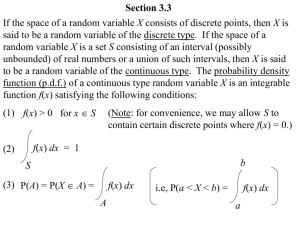


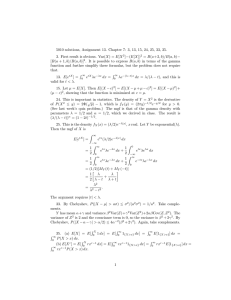
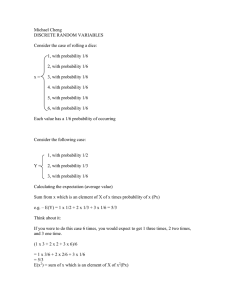


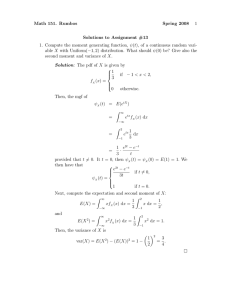

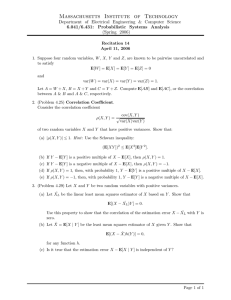
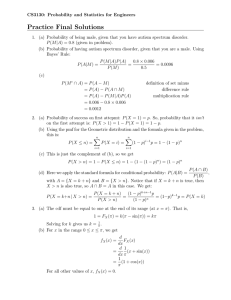
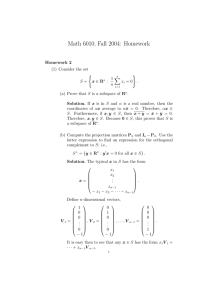
![Problem sheet 1 (a) E[aX + b] = aE[X] + b](http://s2.studylib.net/store/data/012919538_1-498bfd427f243c5abfa36cc64f89d9e7-300x300.png)
